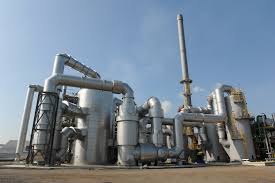Chemplex seeks RBZ forex fundraising approval
Share

Harare (New Ziana) – Fertiliser and chemical manufacturer, Chemplex Corporation is seeking Reserve Bank of Zimbabwe (RBZ) approval to sell some of its assets in US dollars to raise $10 million to complete a sulphuric acid plant at Zimphos, one of its subsidiaries.
Chemplex runs companies in the fertiliser and chemical value chain including Zimphos, Sable Chemicals and the Zimbabwe Fertiliser Company.
Chemplex chief executive officer, Tapuwa Mashingaidze said the plant was 30 percent complete but the project was being hampered by a lack of foreign currency.
“We have got a plan as Zimphos to, with Reserve Bank permission, sell some of our real estate at Zimphos in US dollars specifically for the purpose of raising funds to finish the sulphuric acid plant project, that is work in progress,” he said.
“For the sulphuric acid plant we are trying to raise another US$10 million to finish it. The project has been stretched out over time, we should have finished this project maybe two years ago but we have been struggling to get forex to complete it but I think now we have got a plan that might help us finish it.”
Mashingaidze said if RBZ approval is secured this year, the company hoped to complete the sulphuric acid plant during the course of 2020 or early 2021.
“That will contribute directly to saving the country forex and also ensuring that we do not have this continuous cycle of fertiliser shortages linked to forex shortages,” he said.
“The plant that we are talking of will produce 250 tonnes per day of sulphuric acid. Of that, maybe about two thirds of sulphuric acid we will be converting to fertilizer phosphates that is Single Superphosphate (SSP), so each tonne of sulphuric acid will give us 2 tonnes of SSP.
“The other one third of the plant’s output will be going to production of water treatment chemicals.”
Meanwhile, Mashingaidze said the company’s other subsidiary, Sable chemicals required US$30 million per year to utilise its production capacity.
“Sable chemicals historically had capacity to produce 240 000 tones of ammonium nitrate and that was almost equal to local demand of nitrogen.However, because of the power problem of 4-5 years ago, the electrolysis plant on which Sable’s ammonia production was based was closed and that immediately halved Sable’s capacity to 120 00 tones which is the capacity that they talk of now, but to utilise even that capacity Sable requires something around US$30 million per year for that capacity to be utilised.
“It has been struggling to get that, in fact they got one tenth of that in 2018, they got US$ 3 million. That restricts their output and yet as a country we spent US$100 million in 2018 alone on ammonium nitrate (imports). We think we could have shifted the balance more if Sable was supported with US$30 million.”
New Ziana









